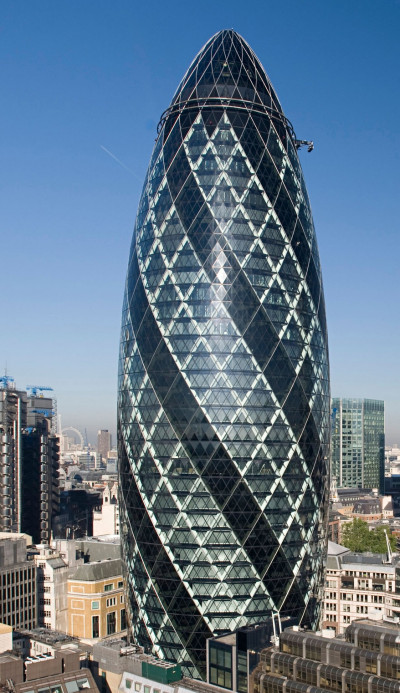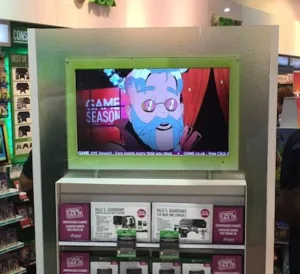 Samsung Electronics in the UK held a pre-ISE press briefing. The meeting was at the top of the “Gherkin”, an unusual, but interesting place for this kind of event.
Samsung Electronics in the UK held a pre-ISE press briefing. The meeting was at the top of the “Gherkin”, an unusual, but interesting place for this kind of event.Phil Gaut, Director of Displays in the UK, and a long-standing member of staff in that position, with five years now, opened up the meeting.
Samsung’s display business in the UK is attacking a number of markets. It, of course, has a strong share in monitors (although in revenue terms, the market has been flat for the firm for a number of years), in large format displays and over the last year has had an impact on hotel TVs (where the company’s SmartTVs have been popular for catch up TV). It plans to boost other commercial TV, but has identified LED and eBoards as the key target markets for growth in the UK.
Last year, Samsung bought LED supplier, Yesco and there is a range of LED product now available, from 1.5mm to 16mm pitch (1.5mm – 2.5mm made in Suwon, the others by Yesco in the US) indoors and up to 25mm outdoor.
Samsung has had design wins in LED in Europe in FC Porto, the AlexanderPlatz Berlin and Galeria Vittorio in Milan. So, that means no UK installations yet, but Gaut hopes to have a win by the end of March. A key decision in the development of LED sales was to appoint PSCo (now part of Midwich) as a distrbutor. Samsung plans to appoint another distributor for LED products in time, but the prospective partner needs more time to prepare. (Samsung has appointed Mark Taylor, who was previously with Daktronics, to head up the LED push). PSCo will have a demonstration 1.5mm pitch wall on display by the end of March.
Gaut said that his group had identified 20 or so corporates in the London area that might be interested in transitioning from LCD-based video wall solutions, to LED-based systems. Of course, not all will go ahead, but he is bullish about the prospects. He hopes to get as many as 10 to 20 installations in 2016 (although the number of projects so far in the UK is well below the level that Gaut suggested he might win when we spoke at Infocomm in 2016. This was mainly, we heard later, that Samsung did not win a big tender with a major DOOH company). Samsung will have 1.4mm LED product by the end of Q1.
In LFDs, business is developing, but with displays increasingly simply seen as internet “end points”, there is more and more exposure to IT departments. Having said that, For AV products, Samsung UK has Exertis, Midwich and Medium as distributors and sees no need to go to more broadline distributors, as “they wouldn’t add much value”. Although entry level signage can be sold this way, the high brightness, video wall and other segments need value added channels, Gaut said.
eBoards are a target market, as Samsung has little share in that segment. It is adding Android to its SoC-based solutions, which will have the same level of SoC technology as the Smart Signage and that will help penetration into the market. The company plans to add EMR pen touch to its infrared technology (it has an investment in Wacom as we have reported in the past – Man. Ed.)
Gaut highlighted several times that Samsung’s Financial Services division can be really helpful in bringing deals together. He explained how a deal had been made with UK retailer “Game” to finance new technology to enable a change in business model, with financing of the whole package over a three year period. Displays are being used in the windows in Game, but the project also included training, support and warranty as well as supply and installation.
The Game Store Project used Samsung Displays & Brightsign Players – image:Pixels Ltd
In hospitality TV, Samsung has been increasing its share and success, Gaut believes. He said that Smart TVs with apps, especially “catch up TV” apps such as the BBC iPlayer had become especially important in the UK hospitality business.
Analyst Comment
Gaut highlighted that eBoards are seen as a big opportunity for Samsung. We asked why, in that case, Samsung reduced its presence at the recent BETT show? We heard that the decision was made to spend the money in the marketing budget on individual demonstrations and training as it was felt that this would bring a better return. (BR)

